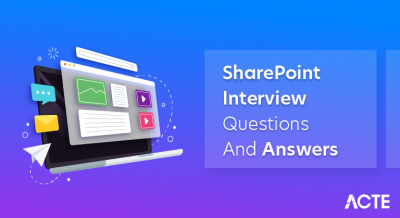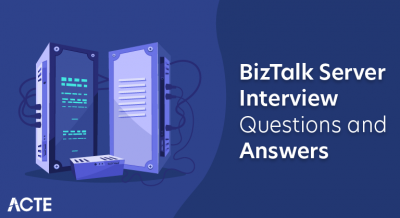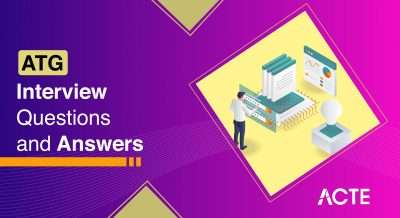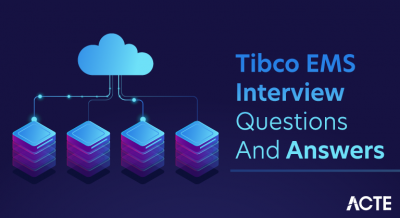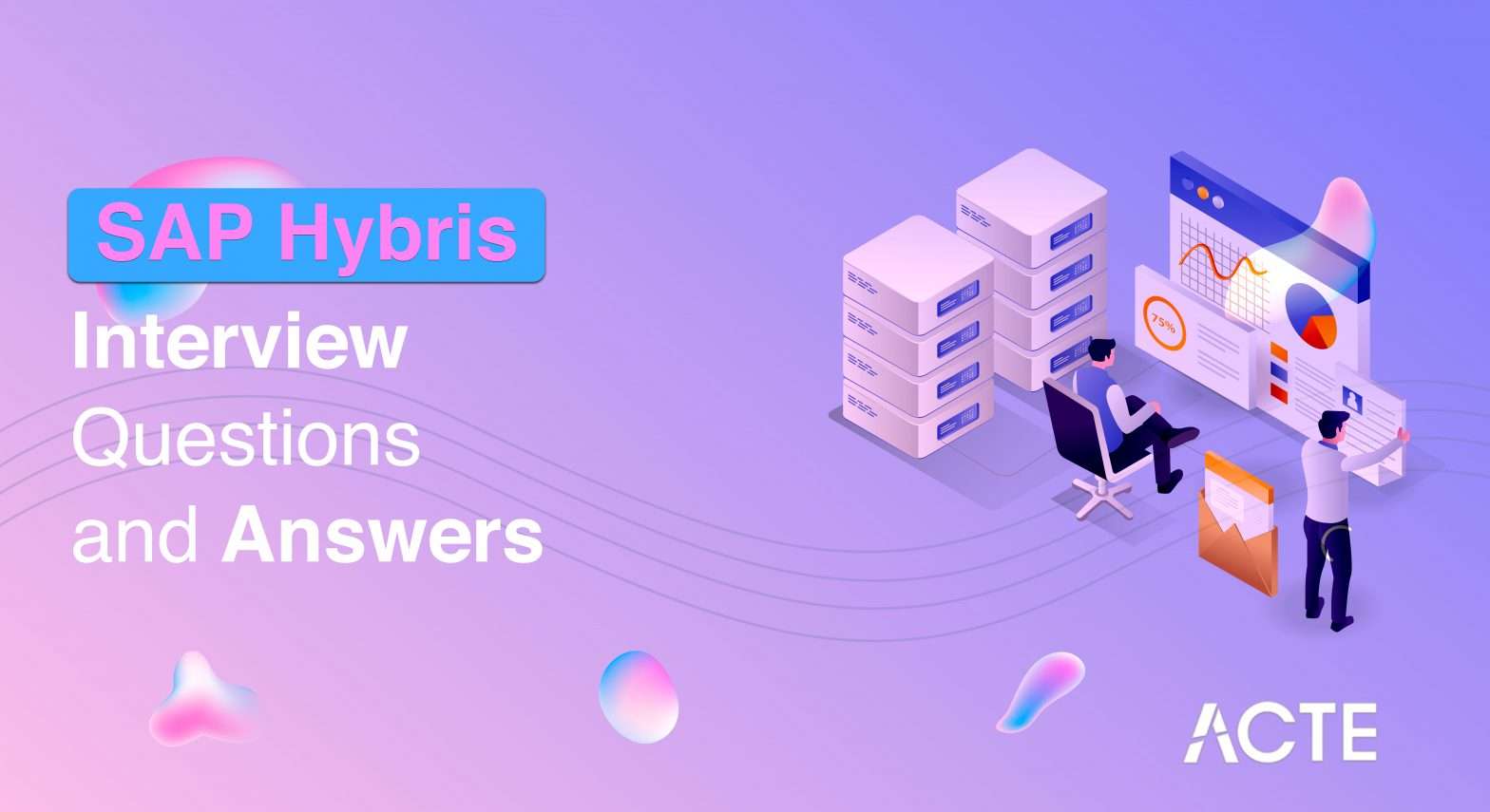
SAP Hybris is an omnichannel commerce platform developed by SAP SE, designed to help businesses deliver exceptional customer experiences across various touchpoints. It offers a comprehensive suite of solutions for e-commerce, marketing, sales, service, and revenue management, enabling organizations to engage customers effectively and drive business growth.
1. What’s Hybris?
Ans:
Hybris is a software company that provides enterprise-position e-commerce and product content operation results. Firstly, an independent company, Hybris, was acquired by SAP in 2013 and later integrated into the SAP suite of business operations. The platform is designed to help businesses vend more effectively across various channels( online, mobile, in-store, etc.), manage registers, and handle client data efficiently.
2. What are the crucial points for any business?
Ans:
- The crucial points for any business generally involve strategy development, client engagement, functional effectiveness, fiscal operation, invention, and compliance.
- A strong business strategy helps define the direction and pretensions of the company.
- Effective client engagement ensures that the business remains applicable to its request.
- Functional effectiveness involves optimizing processes and coffers to maximize productivity.
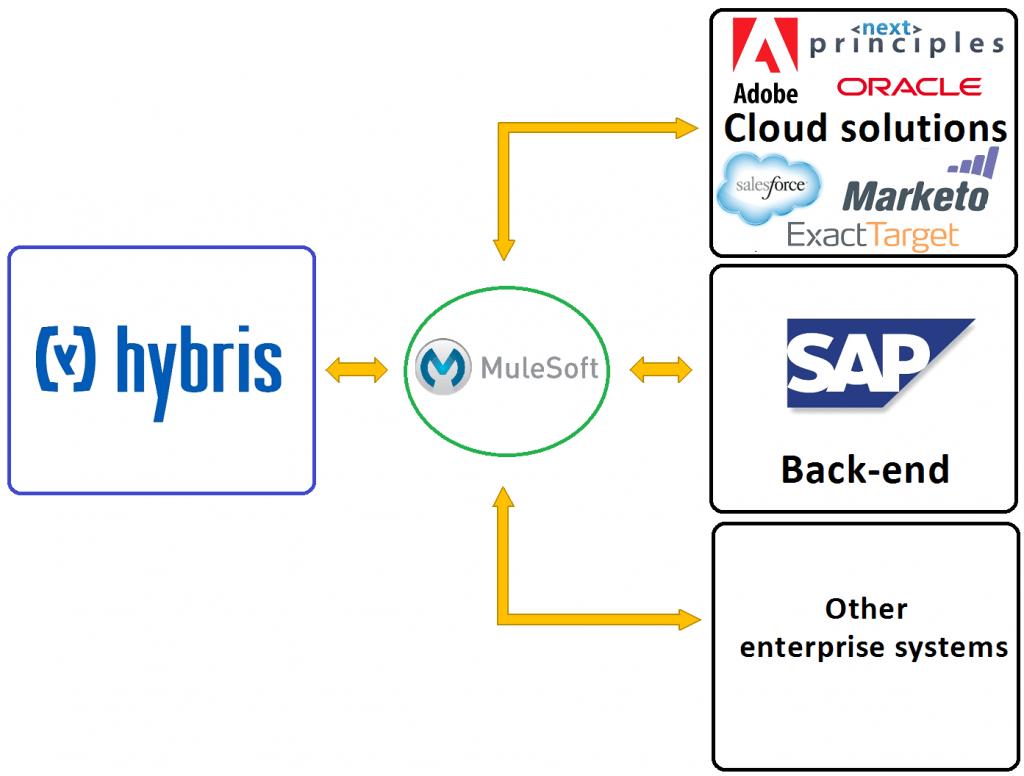
3. How can businesses attract guests?
Ans:
Businesses can attract guests by understanding and meeting their requirements and preferences through targeted marketing, competitive pricing, superior product or service quality, and excellent client service. Effective use of digital marketing, including social media and SEO, can significantly boost visibility and attract broader followership. Establishing a strong brand and maintaining a positive character also play pivotal roles.
4. what is the different between SAP Hybris Sales Cloud and SAP Hybris Service Cloud.
Ans:
| Aspect | SAP Hybris Sales Cloud | SAP Hybris Service Cloud |
|---|---|---|
| Primary Functionality | Facilitates sales processes, lead management, and CRM. | Supports customer service operations, case management, and ticketing. |
| Focus | Centers on optimizing sales effectiveness and revenue generation. | Focuses on delivering superior customer support experiences. |
| Key Features | Lead management, opportunity tracking, and sales analytics. | Case management, service ticketing, and knowledge management. |
| Target Audience | Sales teams, sales managers, and CRM users. | Customer service representatives and support teams. |
5. What are the challenges in retaining guests?
Ans:
Retaining guests can be challenging due to adding competition, changing consumer preferences, profitable factors, and the demand for continual invention. Guests have numerous choices and can switch to challengers if they perceive better value or service away. Also, maintaining high levels of client satisfaction and fidelity requires harmonious trouble in perfecting service quality, bodying client relations, and responding effectively to feedback and complaints.
6. What is the significance of digital metamorphosis for businesses?
Ans:
- Digital metamorphosis is pivotal for businesses as it enables them to facilitate processes, enhance client gests, and acclimatize to changing request dynamics.
- It entails offering value to customers, implementing fundamental changes to how organizations run, and integrating digital technology into every aspect of a firm.
- Digital metamorphosis helps businesses increase effectiveness, reduce costs, and facilitate availability and convenience for guests through robotization and digital services.
7. What’s the part of technology that helps guests?
Ans:
Technology plays a crucial role in enhancing client experiences by providing efficient, reliable, and accessible services. It allows businesses to collect and analyze customer data, helping them understand preferences and behaviors for personalized interactions and offerings. Automated systems, such as chatbots and AI-driven support tools, quickly address customer inquiries, reducing wait times and improving satisfaction.
8. What are guests ’ prospects of companies?
Ans:
- Guests anticipate companies to be responsive, transparent, and visionary in their dealings.
- They demand high-quality products and services that offer value for plutocrats.
- Personalization is a crucial anticipation; guests want gests acclimatized to their requirements and preferences.
9. What’s SAP marketing?
Ans:
SAP Marketing is part of the SAP client Experience suite; it’s designed to help associations understand and engage with their guests more effectively. The platform uses real-time analytics to give deep perceptivity into client behaviour and preferences, enabling marketers to deliver substantiated messages across various channels. It integrates with other SAP products, enhancing data thickness and furnishing a comprehensive view of the client trip, which helps in casting targeted marketing strategies.
10. Who’s SAP marketing suitable for?
Ans:
- SAP Marketing is suitable for medium to large enterprises looking to ameliorate their marketing sweats through advanced analytics and integrations.
- It’s particularly salutary for companies that operate on a global scale and need robust marketing tools to manage complex client relations across different regions and channels.
- Businesses in industries where customer involvement directly affects business success, like manufacturing, technology, and retail, can benefit greatly from implementing SAP Marketing.
11. Describe the crucial pillars of the architecture.
Ans:
The Hybris framework, now integrated into SAP Commerce Cloud, is built on key pillars of flexibility, scalability, and extensibility, designed to seamlessly support both B2B and B2C e-commerce operations. It features a robust commerce core that handles essential functions like product content management and order processing. Additionally, its omnichannel connectivity layer ensures a consistent customer experience across all touchpoints.
12. What are the details of the software and the handling conditions for the mongrel?
Ans:
- To emplace Hybris, now known as SAP Commerce Cloud, several software and tackle prerequisites must be met.
- The software requires a Java Runtime Environment, a compatible database operation system like MySQL or Oracle, and a web garçon like Apache Tomcat.
- Handling conditions vary by deployment scale but typically require a multi-core processor, at least 16 GB of RAM, and sufficient storage space. These ensure smooth and efficient system performance.
13. What are some crucial features of omni-moneybags in commerce?
Ans:
Omni-commerce refers to a unified approach to commerce that provides a harmonious and flawless shopping experience across all channels, whether online, in-store, or via mobile. Crucial features include channel integration, allowing guests to switch between channels seamlessly; substantiated content and recommendations grounded on users’ geste and preferences real-time force visibility, enabling guests to see product vacuity; harmonious client service across all touchpoints; and robust data analytics to track client relations and optimize the shopping experience.
14. What is e-commerce?
Ans:
- E-commerce, or electronic commerce, refers to the exertion of buying and dealing goods and services over the Internet.
- It encompasses a broad range of business conditioning and models, from retail deals directly with consumers to business dealings between companies.
- Over time, e-commerce has grown exponentially due to its convenience, speed, and the broad availability of the internet, allowing consumers to protect themselves from anywhere at any time.
15. What are the different types of e-commerce?
Ans:
- B2C( Business- to- Consumer) Businesses vend directly to consumers.
- B2B( Business- to- Business) Involves deals between businesses.
- C2C( Consumer- to Consumer) Consumers vend to other consumers, generally through platforms like eBay or Etsy.
- C2B(Consumer-to-Business) Consumers give products or services to businesses, frequently through crowdsourcing platforms or freelance job doors.
- B2G( Business- to Government) Companies give products or services to government realities.
16. What’s C2Be-commerce?
Ans:
In contrast to the conventional business-to-consumer paradigm, C2B, or consumer-to-business-commerce, involves customers offering goods or services to companies. This type of e-commerce allows individuals to set prices or demand services at their needed rates, frequently through platforms that connect freelancers with companies demanding specific tasks completed. Exemplifications include stock print websites, where shutterbugs vend their prints or request exploration companies where consumers give input that can impact business opinions.
17. What is the largest e-commerce platform?
Ans:
- The largest e-commerce platform encyclopedically is Amazon.
- Innovated in 1994 by Jeff Bezos, Amazon began as an online bookstore but snappily expanded to vend a wide variety of goods and services, including electronics, vesture, and groceries.
- Its global presence and continuously evolving business model keep it at the van of the e-commerce sector.
18. What’s SAP Hybirs as a service?
Ans:
Amazon is the largest e-commerce platform globally, founded by Jeff Bezos in 1994 as an online bookstore. It quickly expanded to offer diverse products and services, including clothing, electronics, and groceries. Known for its vast selection, innovative logistics, and customer service, Amazon also offers a Prime subscription for benefits like free shipping and streaming.
19. What do SAP Hybris offer some integrations?
Ans:
- SAP Commerce Cloud( formerly SAP Hybris) offers robust integration capabilities that enhance its mileage in different commercial surroundings.
- Crucial integrations include SAP S/ 4HANA for backend operations, SAP Marketing Cloud for advanced marketing crusade operation, and SAP client Data pall for secure client data operation.
- Also, it can connect with SAP Service Cloud to enhance client service operations and with SAP ERP systems to unify business processes and data across the enterprise, thereby creating a more streamlined workflow.
20. How can considerable Hybris samples be supervised in one tool?
Ans:
Supervising large SAP Commerce Cloud( Hybris) cases effectively requires a comprehensive approach using advanced operation tools. SAP provides several executive tools, like the SAP Commerce Cloud Portal, which allows for central operation of multiple surroundings. Integrating with operation performance operation( APM) tools similar to Dynatrace or SAP Solution Manager can be invaluable for performance monitoring and error shadowing.
21. Why is order significant in initems.xml?
Ans:
- In SAP Hybris( now part of SAP Commerce Cloud), theitems.xml train is pivotal as it defines the metadata for item types, attributes, and connections that shape the data model of the operation.
- The order of rudiments initems.xml is significant because it dictates the sequence of type system initialization.
- When Hybris initializes, it processes this train to make the database schema and services around the item types defined.
- Proper ordering ensures a smooth deployment and functional stability of the Hybris system.
22. What’s the part of Jalosession?
Ans:
In SAP Commerce Cloud, the JaloSession is crucial for managing user sessions and interactions with the commerce data model. It serves as a bridge between Java objects and the persistence layer, handling user authentication, session-specific data, and configurations. Although part of the legacy API and still supported for backward compatibility, developers are encouraged to use the more robust and scalable service layer API.
23. What are the superior aspects?
Ans:
- In software development, especially in frameworks like Hybris, “superior aspects” refers to advanced features of a component that offer significant benefits over standard implementations.
- In the SAP Commerce Cloud, superior aspects could relate to largely optimized law, innovative data handling mechanisms, or user interface advancements that facilitate performance, scalability, or user experience.
- These superior aspects are pivotal for businesses that need to maintain competitive advantages in e-commerce by offering brisk response times, better trustability, and more engaging client relations.
24. Why are the criteria developed in program extensions?
Ans:
Criteria developed in program extensions within SAP Commerce Cloud confirm and extend the functionality of the base platform to meet specific business requirements. By using program extensions, inventors can introduce new criteria for sorting, searching, and managing data according to customized business rules and workflows. These extensions are pivotal for accommodating unique request conditions, nonsupervisory compliance, or particular client segmentation strategies.
25. How do you divide an order into multitudinous entrustments?
Ans:
- Dividing an order into multiple entrustments in SAP Commerce Cloud is a common practice for managing shipments that need to be transferred to multiple destinations or when particulars are grazed in different locales.
- This process involves unyoking the order grounded on logistics criteria similar to force vacuity, shipping costs, and delivery times.
- The platform’s Order Management module facilitates this by allowing configurations that automatically or manually member orders into entrustments.
26. How do you put up an Svn sphere for Hybris systems?
Ans:
Setting up an SVN (Subversion) repository for Hybris systems involves installing an SVN server and creating a repository structure with branches, tags, and a trunk for development. Integrate SVN with the Hybris environment by configuring build and deployment tools, and maintain efficient development through regular commits, updates, and branching strategies.
27. What are the parcels of the SAP property group?
Ans:
- Scalability Ensures that SAP systems can gauge up or down according to business demand.
- Security Features robust security mechanisms to cover data and deals.
- Trustability offers high vacuity and fault forbearance to minimize time-out.
- Performance Optimized for high performance to handle large volumes of data and deals efficiently.
- Integration Capability, Designed to integrate seamlessly with other SAP and third-party systems.
28. What is the possibility of running multiple instances on a single machine?
Ans:
Yes, it’s possible to run multiple Tomcat cases on a single machine. This setup allows for managing different operations or surroundings singly within the same physical or virtual garçon. To do so, each case must be configured with its garçon harborage, arrestment harborage, and HTTP/ HTTPS anchorages to avoid conflicts. Also, each case should point to separate directories for their separateCATALINA_HOME andCATALINA_BASE to manage their configurations and web operations singly.
29. What are roster and familiar aspect groups?
Ans:
- Roster interpretation operation in platforms like SAP Hybris allows businesses to manage different performances of a product roster, generally classified into” staging” and” online” performances.
- The” staging” interpretation is used for preparing and testing changes before they go live, while the” online” interpretation is what the guests interact with.
- These groups help ensure that any variations or additions to the product roster can be considerably reviewed and tested in the staging terrain to help crimes or issues in the live terrain.
30. Explain the Hybris Accelerator conception.
Ans:
The Hybris Accelerator is a frame designed to speed up the perpetration of e-commerce websites using the SAP Commerce Cloud( formerly SAP Hybris). It provides a ready-to-use web store template that includes essential e-commerce functionalities similar to product quests, checkout flows, elevations, and client service. This out-of-the-box result is largely customizable and scalable, allowing businesses to acclimate the features, designs, and workflows to fit their specific conditions.
31. What are some release versions of Hybris?
Ans:
- SAP Hybris has been through several release performances, enhancing its capabilities with each replication.
- Notable Hybris versions include 5.7, which introduced a new cockpit and improved search, and 6.2, which enhanced B2B commerce and personalization. Version 6.7 focused on improving backend functionalities and product content management.
- Latterly performances have been incorporated into the broader SAP Commerce Cloud updates as the platform evolved towards pall-native results, perfecting scalability and integration with other SAP products.
32. What language has Hybris been developed?
Ans:
SAP Hybris is primarily developed in Java. Java is an extensively used, object-oriented programming language known for its portability, performance, and robust community support. This makes it an ideal choice for constructing enterprise-level operations like SAP Hybris, which has scalability, security, and integration capabilities. The use of Java enables Hybris to integrate seamlessly with a wide range of other enterprise systems and technologies, further enhancing its mileage in complex business surroundings.
33. What is the requirement of Hybris for deploying changes to all types of websites?
Ans:
- Not all changes to a website erected on SAP Hybris bear a full deployment of law.
- Minor content updates and certain configuration changes can be handled directly through the Hybris Management Console or Backoffice without demanding to emplace law.
- Hybris supports hotfixes and partial updates, which allow for planting only specific changes rather than a full-scale deployment, making the process more effective.
34. What kind of hunt machine are we using in Hybris?
Ans:
SAP Hybris uses Apache Solr as its dereliction hunt machine. Solr is an important, scalable open-source hunt platform erected on Apache Lucene. It provides expansive hunt capabilities that are largely configurable and effective, which is essential for handling complex product registers and easing rapid-fire, applicable hunt results in e-commerce spots. Solr supports full textbook hunt, hit pressing, faceted hunt, dynamic clustering, and rich document running, enhancing the overall user experience on platforms erected with SAP Hybris.
35. What’s the use of Hybris Management Console or Backoffice?
Ans:
- The Hybris Management Console( EMC) and Backoffice are executive interfaces in SAP Commerce Cloud that allow business users and directors to manage and oversee various aspects of commerce operations.
- The back office is the newer, more flexible user interface designed to replace the aged hMC.
- Users can configure workflows, view reports, and handle client service issues, all within a customizable and user-friendly terrain.
36. What are the crucial features of Hybris workflow?
Ans:
Hybris workflow facilitates the operation of business processes within the SAP Commerce Cloud terrain. Crucial features include the capability to define complex business processes, assign tasks to users, and automate decision-making processes. Workflows are particularly useful for managing product blessing processes, content confirmation, and order operation tasks. They ensure that each step is completed and approved before moving on to the coming, enhancing effectiveness and compliance.
37. Name the Hybris Advanced Personalization Rules.
Ans:
- Segmentation Rules Target users grounded on specific demographics, browsing geste, or purchase history.
- Behavioral Targeting Rules acclimatize content and recommendations according to the users’ once relations.
- Contextual Personalization Rules Offer personalization grounded on the users’s current environment, similar to position or time of day.
38. What’s Hybris ASM( supported Service Module)?
Ans:
Hybris-supported Service Module( ASM) is an element of SAP Commerce Cloud designed to empower client service representatives to provide real-time client support. ASM allows agents to” mimic” the client’s online session, furnishing the capability to view what the client sees and perform conduct on their behalf. This capability is critical for troubleshooting, completing deals, and furnishing individualized support. ASM enhances the client service experience by enabling further effective and immediate backing, therefore perfecting client satisfaction and fidelity.
39. What’s the Hybris client service module or client Service cockpit?
Ans:
- The Hybris client Service cockpit is a point of SAP Commerce Cloud that provides client service agents with an important tool to manage client relations and issues effectively.
- It centralizes client data, order information, and service requests and returns operations in one interface.
- This enables agents to snappily pierce comprehensive client views, manage dispatches, and resolve issues efficiently.
40. Explain the services handed by Hybris.
Ans:
SAP Commerce Cloud, formerly known as Hybris, provides a whole range of online services intended to assist businesses in connecting seamlessly with their guests across multiple channels. These services include important product content operation, sophisticated order operation capabilities, and advanced personalization through its smart selling and retailing tools. Also, SAP Commerce Cloud integrates fluently with other SAP products, offering services for client data operation, marketing, deals, and client service.
41. What’s Cronjob? Explain the Cronjob process.
Ans:
In SAP Commerce Cloud, a Cronjob is a scheduled service that automates regular platform tasks, such as data import/ import, force updates, or complex computation tasks that need to run at specific intervals.
The Cronjob process involves:
- Defining the task.
- Scheduling when the task should run(e.g., nightly, daily).
- Determining the sequence of operations.
42. How do you know the interpretation of Hybris that you have in your machine?
Ans:
- To determine the interpretation of SAP Hybris( SAP Commerce) installed on your machine, you can pierce the Hybris Administration Console( hAC).
- After logging into the hAC, navigate to the’ Console’ tab and elect’ Scripting Languages’; also, choose’ Trendy’.
- This interpretation information includes both the major and minor interpretation figures, helping you understand the specific figure and update the position of the platform.
43. What is the architecture of the Hybris E-commerce Accelerator?
Ans:
The HybrisE-commerce Accelerator is erected to provide a ready-to-use web-ground storefront that speeds up the development of e-commerce spots. It’s grounded on a modular armature that allows for expansive customization and scalability. The armature is generally concentrated, conforming to a donation subcaste( frontal end), a business sense subcaste, and a data access subcaste. The frontal end uses Spring MVC and can be customized using WCMS( Web Content Management System).
44. What is the flexibility of the creation module in Hybris?
Ans:
- Yes, the creation module in Hybris( SAP Commerce Cloud) is largely flexible and designed to support a wide range of promotional strategies and complex reduction scripts.
- It allows businesses to define creation rules that can be applied to various aspects of the client trip, including product discounts, dispatching abatements, and buy-one-progeny-one-free offers, among others.
- These elevations can be targeted and grounded on client parts, actions, or order history. The module includes a rule machine that allows marketers to produce and manage elevations without the need for expansive IT involvement.
45. What will happen if the operation has additional SKUs? Will Hybris support it if it has more than 1 million SKUs?
Ans:
SAP Hybris is designed to handle large volumes of data efficiently, including scripts with more than 1 million SKUs. The platform’s scalability is one of its strong points, supported by its robust data operation and hiding mechanisms that help maintain performance indeed under significant cargo. The flexible hunt service erected into Hybris is optimized for high-volume product surroundings, easing quick and effective hunt operations across expansive product registers.
46. What is the history of Hybris?
Ans:
- Hybris was innovated in 1997 in Munich, Germany, with a focus on furnishing enterprise software results for e-commerce, product content operation, and order operation.
- Over time, Hybris evolved into a leading provider of e-commerce results, known for its capability to handle complex registers and integrate seamlessly with other business systems.
- In 2013, SAP acquired Hybris, enhancing its capabilities by integrating it into the SAP client Experience suite.
47. What makes the Hybris platform suitable for non-e-commerce websites?
Ans:
While SAP Hybris( SAP Commerce Cloud) is primarily designed for e-commerce operations, its robust content operation capabilities make it suitable for e-commerce websites as well. The platform offers tools for web content operation( WCMS), personalization, and integration capabilities that can be helpful for instructional, commercial, or community-driven websites. Its inflexibility in managing digital content and furnishing substantiated user gests can enhance various types of web doors.
48. What steps will you take to start the Hybris server?
Ans:
- Starting the Hybris garçon involves many ways, generally executed within a command-line interface on the garçon where Hybris is installed.
- Originally, navigate to the Hybris bin directory using a command outstation.
- From then, you will need to set up the Hybris terrain by running the command.
- setantenv.sh( on Unix/ Linux) or setantenv.bat ( on Windows) to initialize the terrain variables.
49. Which top companies are using the Hybris platform?
Ans:
Numerous leading global pots across various industries use the SAP Hybris platform( now part of the SAP Commerce Cloud) to power their e-commerce and client engagement strategies. Some of these top companies include General Electric, Epson America, L’Oreal, 3M, Nikon, Procter & Gamble, and Nestle. These associations calculate on Hybris to produce flawless, intertwined client gests across multiple channels, including online, mobile, and in-store, enhancing their functional effectiveness and client satisfaction.
50. What are the Accelerator-ready stores that we’ve in Hybris?
Ans:
- SAP Commerce Cloud( formerly Hybris) includes several accelerator-ready stores that provide pre-configured, template-grounded-commerce spots that can be launched and customized snappily according to business requirements.
- These accelerators are designed for different levels of diligence, similar to B2C, B2B, telecommunications, fiscal services, and more. Common exemplifications include the Electronics, Apparel, B2B, and China Accelerators.
51. What are the cockpits used in Hybris?
Ans:
Product Cockpit is used to manage product data and roster information.
- Content Cockpit For managing web content and marketing accoutrements.
- Backoffice Administration Cockpit For comprehensive reverse-end operation, including products, orders, guests, and point canons.
- HMC( Hybris Management Console) was preliminarily used for system administration before being replaced by the further comprehensive Backoffice cockpit.
52. How can you pierce the Product Cockpit Management from the Back- office?
Ans:
Penetrating the Product Cockpit from the SAP Commerce Cloud back office is straightforward. First, ensure you’re logged into the back office with applicable credentials. From the main dashboard, navigate to the’ Product’ section. This section is generally set up in the navigation pane or through the workspace’s dropdown menu. Clicking on this will open the Product Cockpit interface, where you can manage product data, roster performances, and other product-related tasks.
53. What’s Hybris Administrator Console?
Ans:
The Hybris Administrator Console( hAC) is a web-based tool that provides directors with an important interface for managing the SAP Commerce Cloud terrain. Through hAC, directors can perform a range of critical tasks, such as executing scripts, managing database objects, covering system performance, and penetrating log lines. The press also allows for the operation of cron jobs, cache, and system initialization and updates. hAC is essential for specialized conservation and troubleshooting, making it a critical tool for system directors.
54. What are the dereliction credentials that we use for the Hybris administration press?
Ans:
The dereliction credentials generally used to pierce the Hybris Administration Console( hAC) are
- Username admin
- word nimda These credentials are meant for original setup and testing purposes and should be changed incontinently after installation to ensure the system’s security.
- Regularly streamlining and managing access credentials is a critical practice in securing the e-commerce terrain from unauthorized access.
55. What are some of the built-in functionalities of the Hybris suite?
Ans:
SAP Commerce Cloud (Hybris) offers a range of built-in functionalities for e-commerce and marketing, including omnichannel management, product content and order processing, search, promotions, and personalization. It supports internationalization with multi-language and multi-currency features, along with B2B functionalities like complex pricing and customer-specific catalogs, ensuring a seamless customer experience.
56. What’s indexing in Hybris?
Ans:
Indexing in Hybris, now SAP Commerce Cloud, organizes data, such as product information, to make it easily searchable and accessible to users. This is essential for performance optimization in e-commerce, as quick and accurate search results improve the user experience. Hybris utilizes flexible search queries based on Solr, an open-source platform that efficiently processes large volumes of data. Solr provides advanced full-text search capabilities, faceted search, and near real-time indexing.
57. What is the process for configuring indicators in Hybris?
Ans:
In Hybris( SAP Commerce Cloud), indexing is primarily handled through Solr, which is integrated into the platform. To perform indexing, directors configure and manage Solr indicators via the Hybris Administration Console. The process generally involves:
- Defining the parcels and attributes of the particulars to be listed.
- Setting up the indexing configurations.
- Running the indexing jobs that process and cargo data into Solr.
58. How do we produce a new user from the aft office?
Ans:
- Log into the back office using the applicable admin credentials.
- Navigate to the user’s operation section, where you can manage places and users.
- Click on the ‘ ’ icon or an original button to add a new user.
- Fill in the needed fields, such as username, word, dispatch, and places.
- Assign applicable groups and access rights depending on the users’s requirements and liabilities.
- Save the changes, and the new user account will be created and ready for use.
59. What are the main types of elevations that we’ve in Hybris?
Ans:
Hybris supports a variety of creation types that help businesses attract guests and increase deals. The main types include
- Product elevations Abatements on specific products.
- Order elevations Abatements grounded on the order value.
- Pack elevations and Abatements for buying a combination of products.
60. What are all the promotions supported by Hybris?
Ans:
Hybris supports an expansive range of creation types to feed various marketing strategies, including
- Chance reduction elevations: Offering a chance off on certain products or orders.
- Fixed Price elevations: Setting a fixed price for particulars or orders under certain conditions.
- Buy X Get Y Free elevations where guests admit one or further particulars for free upon copping a set number of particulars.
61. What is the process for setting up free shipping?
Ans:
To create a promotion in Hybris, access the promotions section in the Management Console or Backoffice. Start by selecting a promotion type that includes shipping, such as a free shipping promotion, and specify the conditions, like a minimum order value. Configure the settings to waive shipping fees when conditions are met, then test the promotion to ensure it works correctly. Finally, activate the promotion for customers to enhance satisfaction and potentially increase order values.
62. How do you search for an order ID in the Back office?
Ans:
- To search for an order ID in the Hybris Backoffice, follow this way
- Log into the back office with the necessary warrants.
- Navigate to the Order Management module.
- Use the hunt point, which is generally located at the top or side of the interface.
- Enter the specific order ID in the hunt field.
- The system will display the order details associated with that ID.
63. What steps do I need to follow to enable Captcha at the registration page and the express checkout option for a shopping cart?
Ans:
To enable Captcha on the enrollment runner and the express checkout option in a shopping wain, one must first integrate a Captcha service similar to Google reCAPTCHA with the website’s backend. This involves registering the point with the Captcha service to gain API keys( a point key and a secret key). For the perpetration, include the Captcha library in the HTML of the enrollment and checkout runners, and use the point key to display the Captcha challenge.
64. What are the benefits of the Hybris Promotion Engine?
Ans:
- The Hybris Promotion Engine, which is part of the SAP Commerce Cloud, offers sophisticated promotional capabilities that enhance marketing strategies.
- Its benefits include high configurability, allowing marketers to produce complex elevations without the need for custom development.
- The machine supports real-time evaluation of elevations, ensuring that promotional offers reflect current shopping wain contents and client relations.
65. What are the features of the Promotion Engine?
Ans:
The Hybris Promotion Engine enhances e-commerce marketing by enabling the creation of various promotion types, such as discounts and loyalty point bonuses. It supports rule-based promotions that apply discounts automatically based on cart contents or customer segments. Featuring an intuitive management interface, it integrates with other SAP Commerce Cloud components and offers tools for testing promotions before they go live, ensuring accuracy and effectiveness.
66. What types of cart canon do we have?
Ans:
- In Hybris and numerous other e-commerce systems, pasteboard canons can generally be distributed into several types: single-use,multi-use, public, and private.
- Single-use tickets are intended for one-time use by a specific user.
- Multi-use tickets can be used multiple times but may have restrictions similar to an expiration date or a maximum number of uses.
- Public tickets are available to any client who has the law.
67. What pasteboard law creator restrictions do we’ve in Hybris?
Ans:
In Hybris, the pasteboard law creator comes with several restrictions to ensure the secure and targeted distribution of promotional canons. Restrictions can include setting a limit on the number of times a pasteboard can be used, either on a per-client or total base. Also, tickets can be confined to specific products, orders, or times. They can also be configured only to apply if certain conditions are met, similar to a minimal wain value.
68. What are the benefits of Implicit elevations in Hybris?
Ans:
- Implicit elevations in Hybris relate to the capability to display elevations to guests before they’re applied, enhancing transparency and encouraging purchases by showing implicit savings beforehand in the shopping process.
- This point benefits both the client and the retailer by adding the liability of conversion through bettered client engagement and satisfaction.
- It allows guests to see the stylish deals available as they protect, impacting their purchasing opinions appreciatively.
69. What are the capabilities of SAP Hybris Cloud for client Deals?
Ans:
SAP Hybris C4C Deals, part of SAP’s cloud offerings, aims to enhance the productivity of sales teams. This cloud-based CRM solution provides features like account and contact management, opportunity management, and sales performance tracking. It integrates seamlessly with e-commerce and marketing for a comprehensive view of customers across channels.
70. What’s the difference between SAP C4C and SAP Hybris Product family?
Ans:
- SAP pall for client( C4C) and the SAP Hybris product family( now part of SAP client Experience) serve distinct, though sometimes lapping, purposes.
- SAP C4C is primarily a pall-grounded CRM result that focuses on perfecting client relations, deals, and services.
- It includes features like deals robotization, client service operation, and marketing analytics.
- While SAP C4C is about managing connections, SAP Hybris centres on transactional and commerce-driven functionalities.
71. What’s the use of Hybris Management Console( HMC)?
Ans:
The Hybris Management Console (HMC) is a web-based interface for managing features of the SAP Hybris Commerce Suite. It provides tools for managing product catalogs, orders, customer data, and system configurations. HMC enables administrators to handle data modeling, import/export data, manage user roles and permissions, and oversee system functionality.
72. What do you understand about hybrid modelling?
Ans:
- Hybris Modeling refers to configuring and customizing the SAP Hybris Commerce platform to fit specific business requirements
- This involves defining data models, which are templates for how data is stored and interacted within the system.
- Hybris uses a flexible, type-grounded system that allows inventors to produce new item types and extend being bones without modifying the core system law.
73. What’s the use of the SAP Hybris Payment module?
Ans:
The SAP Hybris Payment module is an integral part of the Hybris Commerce platform, designed to simplify and secure the payment running process. This module supports the integration of multiple payment styles and gateways, furnishing a flawless checkout experience for guests. It handles deals securely, ensuring compliance with transnational norms like PCI DSS. Also, it facilitates the operation of payment data, supporting various functionalities, including refunds, cancellations, and payment documentation.
74. What do you understand about the Hybris Promotion operation?
Ans:
- Hybris Promotion Management is a point within the SAP Commerce Cloud that allows businesses to produce, manage, and knit promotional juggernauts to enhance client engagement and deals.
- The module is designed to be flexible and user-friendly, enabling marketers to easily implement elevations without demanding expansive specialized support.
- It includes features for testing and optimizing these juggernauts to maximize effectiveness.
75. What’s the use of the SAP Hybris client Service module?
Ans:
The SAP Hybris Client Service module enhances customer service efficiency in e-commerce by managing interactions across channels like email, chat, and phone. It integrates with SAP Commerce Cloud to provide service agents with a comprehensive view of customers, including order history and preferences. Features such as ticketing, issue tracking, and return management streamline processes, ensuring quick resolution of inquiries and improving customer satisfaction and loyalty.
76. What’s the use of the SAP Hybris Billing module?
Ans:
- SAP Hybris Billing module, now part of SAP’s broader client Experience suite, is pivotal for managing the billing and monetization processes for businesses.
- This module supports a variety of billing scripts that include subscriptions, one-time charges, and operation-grounded billing.
- Also, SAP Hybris Billing integrates seamlessly with other SAP modules, allowing for a comprehensive view of client engagements and fiscal deals to optimize the profit operation lifecycle.
77. What’s the part of the halo session?
Ans:
The term “halo session” can refer to various contexts, often involving a demonstration or highlight, but it isn’t a standard industry term. In technology, it may denote an expert-led session showcasing advanced features or best practices of a software solution. In customer service or technical support, it could refer to a premium support session that provides in-depth assistance with complex issues or advanced problem-solving from top-tier support teams.
78. What features make this a fully-fledged content management solution?
Ans:
- Assuming” this” refers to SAP Commerce Cloud, which includes the capabilities of what was formerly known as SAP Hybris, it does include content operation functionalities through its SmartEdit tool and others.
- Still, it’s primarily an e-commerce result rather than a standalone content operation system( CMS).
- For businesses seeking expansive content operation capabilities beyond the e-commerce realm, integrating a devoted CMS might be necessary.
79. How will you compare this with ATG or WCS?
Ans:
Comparing SAP Commerce Cloud (formerly SAP Hybris) with Oracle ATG and IBM WebSphere Commerce (WCS) involves aspects like customization, ease of use, and integration. SAP Commerce Cloud is flexible and scalable for complex B2B and B2C needs. Oracle ATG excels in personalization but can be complex to implement, while WCS offers strong integration but often lags in innovation. Each platform is best suited for specific business requirements.
80. What’s the use of roster operation?
Ans:
- Roster operation is essential in e-commerce for organizing and displaying products effectively to enhance client experience and streamline operations.
- It involves the methodical arrangement of products, including descriptions, specifications, pricing, and imagery, ensuring that information is accurate and up-to-date across all deal channels.
- Effective roster operation helps guests find products fluently, supports force operation, and enables substantiated marketing.
81. What is a typical use case for implementing SAP Hybris in a retail environment?
Ans:
In retail, implementing SAP Hybris can transform customer interactions by integrating it with existing ERP and CRM systems to create a unified customer view. This allows for personalized shopping experiences through tailored recommendations based on past purchases and browsing behavior. Additionally, SAP Hybris efficiently manages complex product catalogs and real-time inventory across all channels, ensuring high customer satisfaction and optimized stock levels.
82. How does SAP Hybris support internationalization and localization?
Ans:
- SAP Hybris supports internationalization by allowing businesses to manage multiple languages and currencies seamlessly within a single platform.
- It features localization tools that acclimatize content and products to specific indigenous request conditions, including original duty computations, compliance with original laws, and payment styles.
- This capability enables businesses to expand into global requests while ensuring a localized user experience that meets indigenous preferences and nonsupervisory norms, thereby enhancing the global reach and scalability of an enterprise.
83. What is the significance of the SAP Hybris Data Hub?
Ans:
The SAP Hybris Data Hub is a crucial integration tool that facilitates data exchange between Hybris and external systems like SAP ERP or CRM. It serves as a centralized data management layer, simplifying data connection, validation, and synchronization to maintain data integrity across platforms. By reducing complexity, it ensures smooth data flow, supporting effective business processes and providing a single source of truth for customer, order, and product data.
84. Discuss the security features in SAP Hybris.
Ans:
- SAP Hybris includes robust security features designed to cover both client data and business operations.
- It supports secure deals with encryption, secure socket layers( SSL), and compliance with PCI DSS for handling credit card deals.
- Also, SAP Hybris allows for configurable user places and access controls to ensure that only the authorized labour force can pierce sensitive data and functional areas.
85. What benefits do businesses gain from using SAP Hybris Cloud for Customers (C4C)?
Ans:
SAP Hybris Cloud for Customers (C4C) is a cloud-based CRM solution that integrates with Hybris Commerce, providing tools for effective customer engagement and commerce operations. It offers sales, service, and marketing features that help manage customer relationships from lead generation to post-sales support. With real-time analytics and mobile access, businesses can improve decision-making and productivity. Utilizing C4C enhances customer satisfaction through personalized engagement and responsive service, fostering loyalty and growth.
86. What’s the difference between SAP Hybris Commerce and SAP Commerce Cloud?
Ans:
- SAP Hybris Commerce was originally a standalone e-commerce result offering protean operation tools for B2C and B2B models.
- With the elaboration towards pall results, SAP rebranded Hybris Commerce to SAP Commerce Cloud, part of the SAP client Experience suite.
- This transition emphasizes pall-native features, including scalability, inflexibility, and enhanced security.
87. What features does SAP Hybris offer to support mobile commerce?
Ans:
SAP Hybris supports mobile commerce with responsive design templates and mobile-specific features in its accelerators, ensuring e-commerce sites are optimized for any device. It also integrates with mobile SDKs and APIs for developing native mobile applications, enhancing user experience with features like push notifications and location-based services, which drive engagement and potential sales conversions.
88. Explain how SAP Hybris supports multi-currency and multi-language features.
Ans:
- SAP Hybris innately supports multi-currency and multi-language functionalities, enabling businesses to feed to global followership.
- The platform offers flexible configuration options for managing local settings, allowing each point to display prices in local currencies and convert them based on current exchange rates.
- For languages, Hybris offers localized point performances that can switch seamlessly between different languages, ensuring content is directly restated and culturally applicable, enhancing the user’s experience.
89. What are the ways SAP Hybris supports multi-currency and multi-language features?
Ans:
SAP Hybris includes important tools for client segmentation, which are integral for executing targeted marketing juggernauts. These tools dissect client data, including literal purchases, browsing geste, and demographic information, to produce distinct client parts. Marketers can also use these parts to knitter juggernauts, which are more applicable to specific groups, adding to the effectiveness of marketing sweats.
90. What are the counteraccusations of GDPR on SAP Hybris executions?
Ans:
- GDPR has significant counteraccusations for SAP Hybris executions, particularly concerning how particular data is collected, stored, and reused.
- Compliance requires ensuring that data is handled securely and that sequestration settings are configurable and transparent to users.
- SAP Hybris facilitates GDPR compliance by furnishing features that enable guests to manage their data preferences and access rights fluently.


